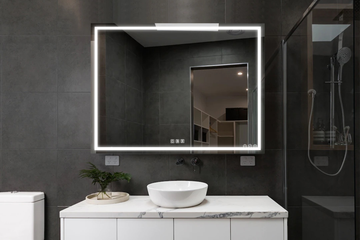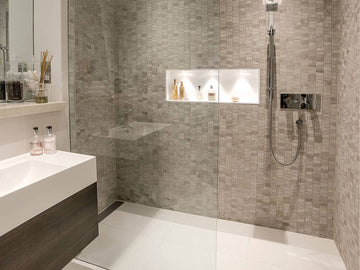The Effect of Bath Bombs on Plumbing. Please Know These Before Using Bath Bombs.
by LucasAlbert on Jun 22, 2021


Believe it or not, the trend of using bath bombs is not slowing down any time soon. From beautiful displays in stores, to Instagram accounts dedicated to colorful soaking baths - they're everywhere. Manufacturers are creating different shapes, colorful and dazzlingly fragrant bath bombs that are gaining more and more attention and love from users.
Adding a colorful bubble bath bomb to your bathtub can transform your bathroom space into a spa that is full of bubbles and colors, sweetly scented, and relieves stress.
While these popular stress relievers are especially popular right now, if you're not careful enough, frequent use of a bath bomb can cause even more problems in your bathroom, especially clogging the drain of your bathtub.
You may ask how a simple, compact bath bomb can clog the drain. The answer is the ingredients that make up the bath bomb.The ingredients vary depending on the manufacturer, but most of the basic components are still the same.
What's in a bath bomb?
Basically, two ingredients make bath bombs fizz: baking soda (sodium bicarbonate) and citric acid. When the object that combines them is placed in a warm bath, you see an acid-base reaction between the two and the release of CO2 (carbon dioxide) gas, which creates fizz and foam.
Some bath bombs use tartar cream instead of acid. Titanium dioxide, commonly used in cosmetics and sunscreens, is also on some ingredient lists, possibly to "give weight and heft" to an otherwise lightweight product, and it may also add some opacity so the color of the bath bomb is more intense.
In addition to acids and bases, most bath bombs also contain laxative salts (known for soothing sore muscles) and oils (such as coconut, soy or olive) to form a cohesive substance, much like adding eggs to keep meatballs in shape. And then there are essential oils to scent your bath. Finally, there may also be extras such as colorants, dried floral pieces, confetti, especially in products aimed at younger consumers, and very messy glitter.

The impact of the components of bath bombs on the plumbing
- There are the various oils, and in the words of plumbing experts, they are the things you need to try to avoid draining into your plumbing system. If a bath bomb contains an oil that liquefies in warm water but solidifies at room temperature, you're in trouble.
- While you can shower in hot water, after 10 feet out the drain, the pipes begin to cool considerably, especially if you live in a colder climate, and anything that runs out of the water can quickly condense.
- In addition, if Epsom salts or other salts are not completely dissolved, they may re-consolidate and eventually clog your drains. Undissolved pieces of these can get stuck in your pipes, which can then trap hair and other debris, leading to clogs.
- Finally, drains are slimy to begin with, so things like flower petals, glitter and other non-biodegradable additions can get stuck. Though they may all seem to float on the surface, they're likely to cause problems when they enter your drain.
- An absolute no-no: putting bath bombs in the jetted tubs / hot tubs. This is disastrous because hot tubs and spas use pumps to draw water in and force it out of the nozzles. And these systems can't really filter out foreign objects from the bath bomb, and if you damage the main pump system, then you may have to pull out the entire tub, which is a costly consequence.
Use Bath Bombs With Caution
Does this mean you can't use bath bombs at all? Of course not! You can enjoy this soothing and relaxing retreat on a regular basis by following these simple suggestions:
- Place your bath bomb in a nylon sleeve to prevent any decorative material from falling down the drain and causing a clog. You can make your own nylon bag using old pantyhose. Simply cut off one leg, insert the shower bomb and tie it in place. It may not look as pretty, but it will prevent a lot of plumbing problems.
- Another way to prevent plumbing accidents is to use a removable drain filter inside the tub to prevent any debris from entering the drain.
- In case you prefer using glitter confetti and floating petals, use them sparingly and get ready to do more work to prevent clogs. Before draining your tub, take a mesh net and use it to catch any solid matter. If possible, remove the drain stopper temporarily and install another layer of protection over the strainer.
- Immediately after using a bath bomb, flush the drain with very hot water. You can also rinse it with a mixture of equal parts baking soda and vinegar to help break down any bath bomb residue before they settle. -- Take a cup of baking soda and pour it down the bathtub drain. Next, add a cup of white vinegar. When you're done, cover the tub drain and let the mixture sit for five minutes. Then rinse the drain with very hot water.
Hope that after reading this article will help you to enjoy a soothing and fragrant spa moment by using bath bombs, while protecting the plumbing.




